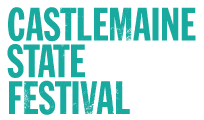Where did you grow up? How did it shape you into becoming an artist?
I grew up in Blackburn South, an eastern suburb of Melbourne, during the baby boom when orchards were being replaced by very ordinary housing estates. Photos my father took at that time can still transport me back to those early carefree days, highlighting the value of documentary photography
Did you chose your art subject or did it choose you?
In the days before the ubiquitous mobile phone camera, like most people I had a film based camera that came out for special occasions. I only became hooked on photography with the development of commercially available digital cameras in the mid-1990s. For me it was having control over the whole photographic process from capture to print.
What attracts you to your subject matter?
When making a career decision at the end of secondary school, I was very attracted to architecture and the way it relates built structures to the landscape. But the studies looked too hard so I became an accountant! Now I have the time to enjoy all things architectural without the formal study overheads.
What is art for you, what does it do for you?
My art is a way of communicating visually to others how I see the world. The positive feedback I get from attendees at my exhibitions and through my web site continually reaffirms my late career decision to turn my back on the high pressure commercial world.
What’s in store for you in 2017?
A large portion of my portfolio is built up through trips to foreign lands. I find I am far more observant of photographic subjects when overseas than when in my own back yard. This year it is the region of Lombardia in northern Italy. Complementing two previous trips to Italy this should give me a good volume of work for a new exhibition.
How do you make your work?
My photographic work lives totally in the digital world. Image capture is with a Nikon D800e SLR camera (my fifth digital camera upgrade in 18 years) and six Nikon lenses. Processing is mostly through Adobe Lightroom and Photoshop. Printing is through an Epson 3880 using Canson cotton rag art papers.
What is it that informs your work and how is it expressed in your art?
My work is principally informed by my peers. As a member of the Australian Institute of Professional Photography I participate in their annual state and national awards processes, including sitting in on their very transparent judging process. New trends in style often evolve over the years of the awards which I consider and occasionally build into my work. I also continue to accumulate a library of photography books covering a wide range of genres and studies of specific photographic artists which I often pick up to get me thinking outside of my own little box.
How do you feel that your art fits into the world at large?
My genre of photography is basically documentary, representing landscapes and buildings at a particular point in time. To the extent that there is a major change, through flood or demolition for example, the capture can be one of historical significance and add to our understanding of the evolution of that space.
Who are you most influenced by in the art world?
My go to artist is the recently deceased Australian painter Jeffrey Smart. Whilst not a photographer, his unique interpretation of the built environment, with it’s very photographic quality, is often in the back of my mind when I am composing a shot.
Who is your favourite artist?
Bill Henson would be my favourite artist.
· He has positioned Australian photography in the international art scene.
· His images have a unique and easily identified mood.
· He stands up for photographic art, particularly in recent censorship issues.
· He has seen fit to exhibit his work in our Castlemaine Art Museum
· Oh – and I enjoy his interpretation of both portrait and landscape subjects
How has your practice changed over time?
When I look back at my images over the sixteen years of my photographic artist life, I can see some subtle changes in technique as I better understand the digital tools of my craft. I have also become more focused on the insides of buildings, in particular the recurring symmetry of design.
How would you like people to view and interact with your art?
My art is typically represented in a formal professional gallery environment as a collection illustrating a particular theme. My last two major exhibitions have been presented as pairs of images, the first old and new, and the second outside and inside. The objective is to take the viewer to a level of involvement in the exhibition beyond just moving from image to image.
You can see images of John Tozer’s work on the Arts Open website.


![Ben-laycock-castlemaine-artist-337x265[1]](/2017/wp-content/uploads/2017/03/Ben-laycock-castlemaine-artist-337x2651-50x50.jpg)
![raven01[1]](/2017/wp-content/uploads/2017/03/raven011-50x50.jpg)
![pjpa_m109214[1]](/2017/wp-content/uploads/2017/03/pjpa_m1092141-50x50.jpg)





